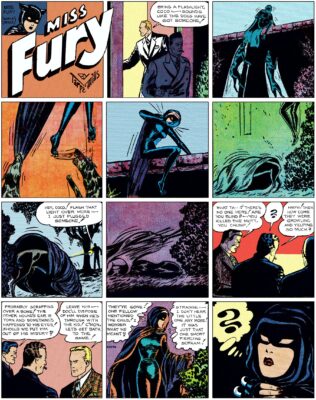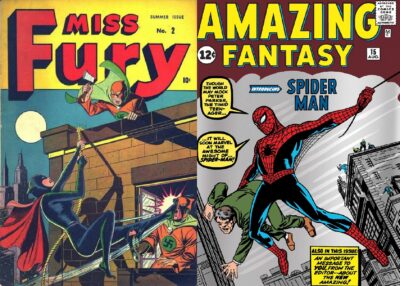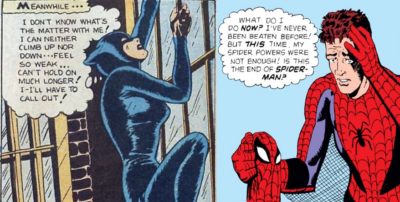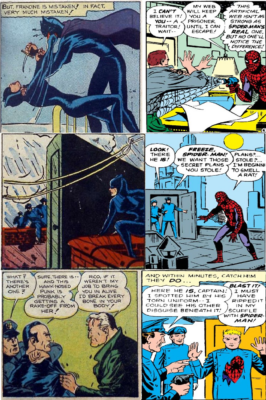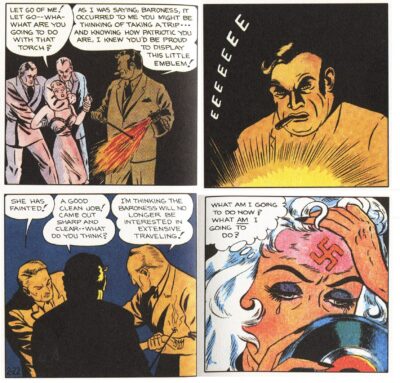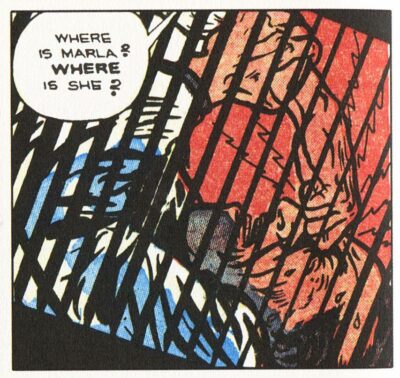Tarpe Mills 1940s Miss Fury Pioneered 1960s Superhero Storytelling by Alex Grand
Read Alex Grand’s Understanding Superhero Comic Books published by McFarland Books in 2023 with Foreword by Jim Steranko with editorial reviews by comic book professionals, Jim Shooter, Tom Palmer, Tom DeFalco, Danny Fingeroth, Alex Segura, Carl Potts, Guy Dorian Sr. and more.
In the meantime enjoy the show:
How about some Hyperbole? 1941 Tarpe Mills’ Miss Fury is the Amazing Spider-Man of her time! or is it the other way around? Okay, far fetched? Maybe not. June Tarpe Mills was a fashion illustrator who is the first woman to create a costumed female super character that appeared in comics dated 6 months before Wonder Woman’s first appearance.
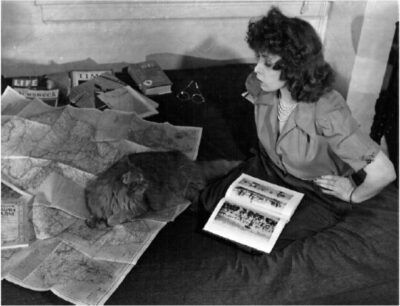
Mills wrote, penciled and inked the adventures of Miss Fury who donned a catwoman type suit before catwoman had this type of suit and first appeared in Sunday Strip format originally as Black Fury then some months later as Miss Fury.
Timely Comics reprinted her adventures from 1942-1946 in comic book format, likely gaining the attention of Stan Lee.
The covers to both Timely’s Miss Fury and Marvel’s Amazing Fantasy 15 start off similar with skin tight hero’s swinging through the city facing off against villains, but the comparison’s don’t stop at the surface. The internal dialogue, plotting and continuous story line do read similarly to one another as Miss Fury reads more advanced than other Golden Age Comic books likely due to its more sophisticated comic strip origins. Not to say there was a gap of the following attributes in comics in between Miss Fury and Spider-Man but a lot of them lacked ALL of these qualities. The dialogue is full and rich with a particular type of plotting that carry the same elements that would make Marvel famous later and those similarities are notable and interesting for example, self doubting dialogue.

They also are very human with limits to their abilities, questioning if they are actually good enough to be hero’s.
Both protagonists face that social awkwardness of when their lover’s dont like their secret alter ego’s.
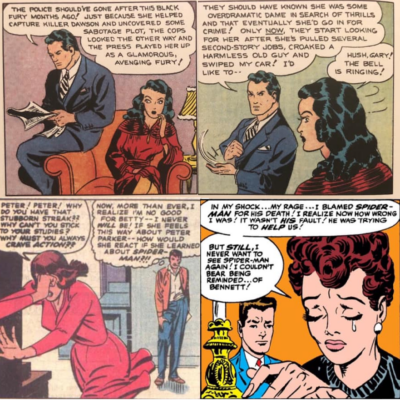
They both also had confusion and animosity from police generated from impersonators that did appear in Spider-Man by Stan Lee and Steve Ditko two decades later.
Whether it influenced Lee or no, a lot of the ingredients that make Spidey early 60s adventures great are present in Tarpe Mills Miss Fury. There were also some elements of Tarpe Mills Miss Fury that advance past the story telling of the 1960s Spider-Man.
As much as Tarpe Mills was able to depict beauty in fashions, etc, she was also able to portray some violent scenes which were powerful in telling the story especially in dealing with the Nazi’s.
General Bruno shoves a screwdriver into another Nazi’s eyes who challenged his power in an intense exchange of information.
The characterizations of the villain seem superior in Miss Fury than early issues of Spider-Man again with General Bruno who expresses his disillusionment with his leader, Adolf Hitler.
It’s always fun to see movement and speed portrayed in comics, and there are various approaches. One approach utilized here is by Milton Caniff in 1939 for Terry and the Pirates (left) and June Tarpe Mills for Miss Fury 1942 (right) where during war time, a protagonist gets physical revenge in battle. Although Tarpe Mills is a pioneer in the writing and art of comics, she likely also had her own influences as well including Milton Caniff.
Tarpe Mills was certainly ahead of her time with her Miss Fury, which time has proven to be a pioneering comic tour de force which was picked up by Martin Goodman at Timely for comic book format and set some of the visual sequential narrative parameters that would become more mainstream in comics two decades later.
cheers.
Join us for more discussion at our Facebook group
check out our CBH documentary videos on our CBH Youtube Channel
get some historic comic book shirts, pillows, etc at CBH Merchandise
check out our CBH Podcast available on Apple Podcasts, Google PlayerFM and Stitcher.
Use of images are not intended to infringe on copyright, but merely used for academic purpose.
Images used ©Their Respective Copyright Holders









